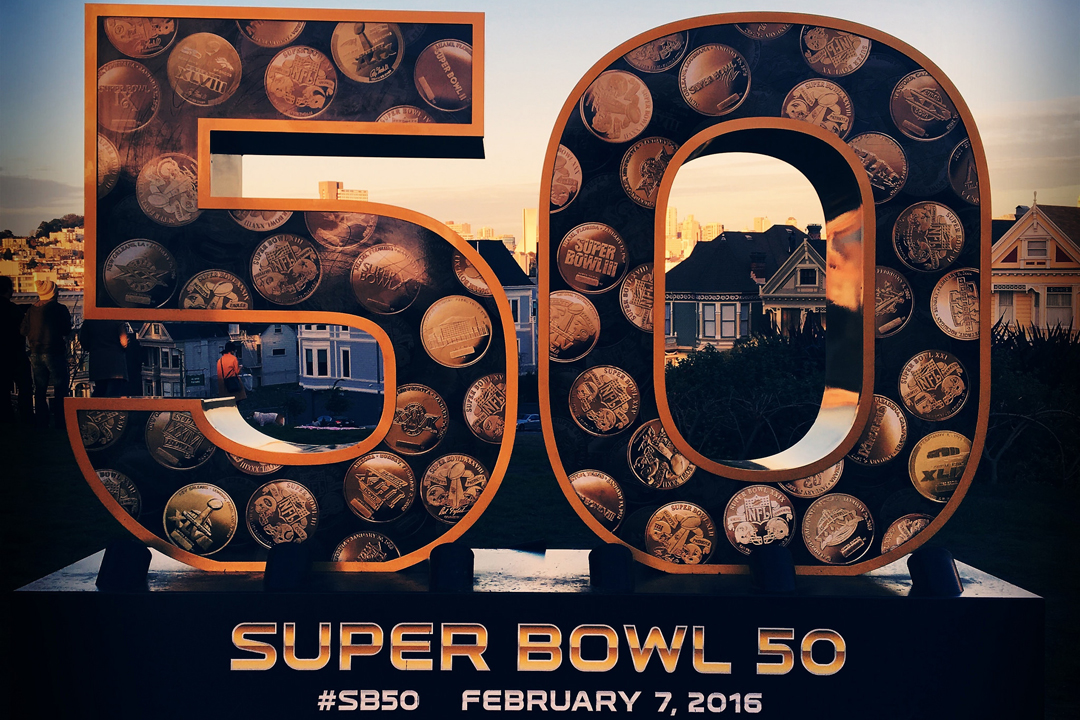For the more than 100 million people who tuned into Super Bowl 50 Sunday evening, watching the Denver Broncos trump the Carolina Panthers 24-10 wasn’t the main attraction—many were watching just for the commercials.
“Estimates show that over 50 percent of Super Bowl viewers are only there to watch the commercials—not the game,” said George Washington University School of Business Professor of Marketing Lynda Maddox.
The Super Bowl is the biggest night in advertising for companies who hope to translate water-cooler conversations into sales. George Washington Today reporter Brittney Dunkins spoke to Dr. Maddox about the best and worst of the Super Bowl 50 commercials.
Q: What was the most memorable Super Bowl commercial of the evening?
A: My personal favorite was the “Super Bowl Babies
” ad that showed generations of children conceived over the 50-year history of the Super Bowl. It’s advertising at its best because we [the audience] found ourselves intrigued by the various generations and imagining how they got here.
It would have taken a lot of repetitions of “the Super Bowl has been around for 50 years” to achieve the same impact. The Dorito’s
sonogram ad had the right amount of “quirkiness” and communicated quickly and creatively. The Audi “Star-man” ad was also a hit in my book because it had an engaging story line that took us empathetically from downtrodden to exhilarated in a few seconds. It was punctuated by great music made especially poignant given David Bowie’s recent passing.
Q: Which Super Bowl commercial was —to put it scientifically— a disaster?
A: Certainly, the “puppy, monkey, baby” ad was memorable, but in a bad way, in my opinion. It was a weird ad and not in a good way. I was curious about whether my millennial students would like it, and not one mentioned it positively. Several found it weird and even uncomfortable. Matt Traina, a GWSB senior and member of the GW Capitol Advertising team entering the National Student Advertising Competition, said that "Mountain Dew's puppy, monkey, baby commercial was a complete fail. It truly makes you feel as if the people behind the commercial were simply out of ideas.”
The "Super Bowl Babies" commercial was one of Dr. Maddox's top picks for the best advertisement of Super Bowl 50.
Q: Is it better to have a terrible or great Super Bowl commercial, just so people are talking about it?
A: When you’re paying $5 million for one ad, you certainly want it to be talked about. So, I’d prefer a “puppy, monkey, baby” ad over one that no one remembers at all. That said, advertisers want to create ads that get shared and replayed on the web, but also that they can replay on television. The Audi ad, for instance, has “staying power,” and I can see this ad running successfully long after the Super Bowl.
Q: Was there a surprising direction that any major brands took with their Super Bowl commercial?
A: Budweiser’s “#not backing down” ad surprised me. The brand strayed from its usual
heart-tugging Clydesdale advertising and took a tough, defensive position using the strength of the Clydesdales to convey brand strength. It conveyed to me that Budweiser is scared of encroachment from microbreweries and specialty brews.
The emotional Audi commercial tapped into nostalgia for America's first forays into space travel and made use of the music of "Star Man" David Bowie, who recently died.
Q: Releasing Super Bowl commercials is a competitive and expensive process, but what is the return on investment?
A: Of course, any advertiser wants an ad to sell, but “selling” is a complex process. Some of the Super Bowl ads will produce immediate sales or product usage. I’ll bet more Doritos were consumed because of the ads, and I personally, added avocados to my salsa after seeing the
avocado ad. Sharing and brand building are key objectives of Super Bowl advertisers. No one is going to purchase a car during the Super Bowl, but ads and information will be shared and there are undoubtedly many Americans who now are thinking about wanting a new car.
Back to the Super Bowl Babies ad, it helps to ensure that we’ll all be back next year to watch more ads.


